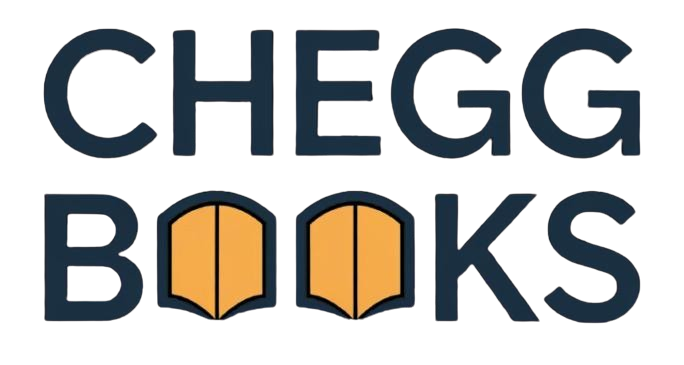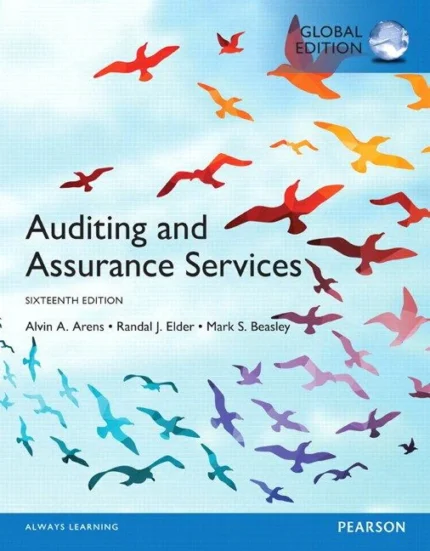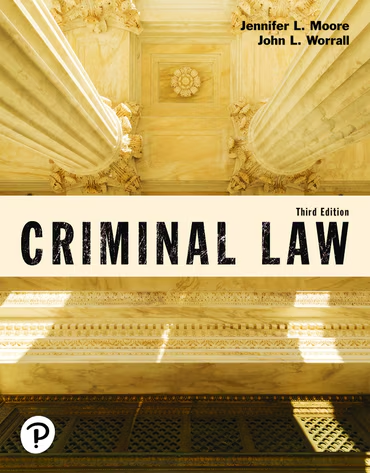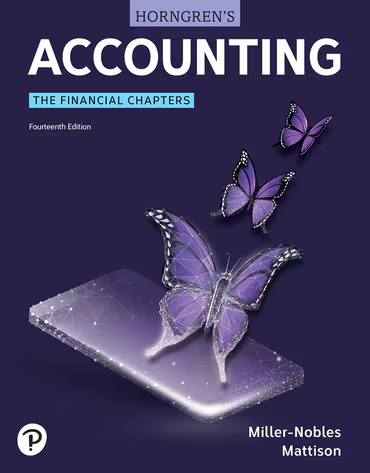“[eBook] [PDF] For Auditing And Assurance Services 16th Edition (Global Edition) By Alvin A. Arens, Randal J. Elder, Mark S. Beasley, Chris E. Hogan” has been added to your cart. View cart
![[eBook] [PDF] For Criminal Investigation 12th Edition By Kären M. Hess, Christine Hess Orthmann, Henry Lim Cho](https://chegbooks.com/wp-content/uploads/2024/08/1-119.jpg)
EBook For Criminal Investigation 12th Edition By Kären M. Hess, Christine Hess Orthmann, Henry Lim Cho
$100.00 Original price was: $100.00.$25.00Current price is: $25.00.
![[eBook] [PDF] For Mathematical Physics with Differential Equations 1st Edition By Yisong Yang](https://chegbooks.com/wp-content/uploads/2024/08/5-108.jpg)
[eBook] [PDF] For Mathematical Physics with Differential Equations 1st Edition By Yisong Yang
$120.00 Original price was: $120.00.$20.00Current price is: $20.00.
EBook For Writing Ten Core Concepts 3rd Edition By Robert P. Yagelski
$115.00 Original price was: $115.00.$25.00Current price is: $25.00.
- ISBN-10 : 0357505654
- ISBN-13 : 978-0357505656
Category: Books
Description
EBook For Writing Ten Core Concepts 3rd Edition By Robert P. Yagelski
Table Of Content
- Chapter 1: Why We Write
- Understanding Writing
- Writing in College
- Writing in the Workplace
- Writing as a Citizen
- Writing to Understand Ourselves
- Chapter 2: Ten Core Concepts for Effective Writing
- The Ten Core Concepts for Effective Writing
- Core Concept 1: Writing is a process of discovery and learning.
- Core Concept 2: Good writing fits the context.
- Core Concept 3: The medium is part of themessage.
- Core Concept 4: A writer must have something to say.
- Core Concept 5: A writer must support claimsand assertions.
- Core Concept 6: Purpose determines form, style, and organization in writing.
- Core Concept 7: Writing is a social activity.
- Core Concept 8: Revision is an essential part of writing.
- Core Concept 9: There is always a voice in writing, even when there isn’t an I.
- Core Concept 10: Good writing means more than good grammar.
- Chapter 3: The Ten Core Concepts in Action
- Step 1: Discover and explore a topic.
- Step 2: Examine the rhetorical context.
- Step 3: Select an appropriate medium.
- Step 4: Have something to say.
- Step 5: Back up what you say.
- Step 6: Establish a form and structure for your project.
- Step 7: Get feedback.
- Step 8: Revise.
- Step 9: Strengthen your voice.
- Step 10: Make it correct.
- Chapter 4: A Student Writer Applies the Core Concepts
- Step 1: Discover and explore a topic.
- Step 2: Examine the rhetorical context.
- Step 3: Select an appropriate medium.
- Step 4: Have something to say.
- Step 5: Back up what you say.
- Step 6: Establish a form and structure for your project.
- Step 7: Get feedback.
- Step 8: Revise.
- Step 9: Strengthen your voice.
- Step 10: Make it correct.
- Chapter 5: Understanding Analytical Writing
- Occasions for Analytical Writing
- Understanding Analytical Writing in College
- Doing Analysis
- Features of Analytical Writing
- Chapter 6: Understanding Argument
- Occasions for Argument
- Understanding Argument in College
- Making Arguments
- Features of Argument
- Chapter 7: Reading for Understanding and Engagement
- Understanding Academic Writing as Conversation
- A Strategy for Reading Academic Texts
- Reading Critically
- Summarizing and Paraphrasing
- Synthesizing
- Chapter 8: Composing with Style
- Developing an Academic Writing Style
- Writing Paragraphs
- Framing
- Writing Introductions
- Transitions
- Chapter 9: Designing Documents
- Understanding Document Design as a Rhetorical Tool
- Principles of Document Design
- Working with Visual Elements
- Designing Documents: Two Sample Projects
- Chapter 10: Finding Source Material
- Understanding Research
- Determining What You Need
- Understanding Sources
- Locating the Right Sources
- Developing a Search Strategy
- Chapter 11: Evaluating Sources
- Determining Whether a Source Is Trustworthy
- Evaluating Source Material for Your Rhetorical Purposes
- Chapter 12: Using Source Material
- Quoting from Sources
- Additional Guidelines for Quoting from Sources
- Avoiding Plagiarism
- Chapter 13: Citing Sources Using MLA Style
- Two Main Components in MLA Style
- Creating In-Text Citations in MLA Style
- Creating a Works Cited List in MLA Style
- Sample MLA-Style Research Paper
- Index
Reviews (0)
Be the first to review “EBook For Writing Ten Core Concepts 3rd Edition By Robert P. Yagelski” Cancel reply
Shipping & Delivery
Instant Downloads
At Library Sources, we make it easy for you to get your eBooks and solution manuals right away. After you buy, you can download your books instantly. No waiting! Just finish your purchase, and you get a link to download your stuff right away. We have many books for all subjects, so you always find what you need. Our service helps students, teachers, and professionals get the books they need quickly and easily.
Benefits Of Buying Solution Manuals From Library Sources
Here are the benefits of buying eBooks or solution manuals from Library Sources:
- Instant Access: Get your books and manuals immediately after purchase.
- Convenience: Download your materials from anywhere, anytime.
- Wide Selection: Choose from a large variety of subjects and topics.
- No Shipping Costs: Save money by not paying for delivery.
- Environmentally Friendly: Digital books reduce paper usage.
- Searchable Text: Easily find information within the book using search functions.
- Portable: Carry your entire library on your device.
- Cost-Effective: Often cheaper than physical copies.

![[eBook] [PDF] For Writing Ten Core Concepts 3rd Edition By Robert P. Yagelski [eBook] [PDF] For Writing Ten Core Concepts 3rd Edition By Robert P. Yagelski](https://chegbooks.com/wp-content/uploads/2024/08/1-114.jpg)


![[eBook] [PDF] For Buck's 2023 Step-by-Step Medical Coding By Elsevier](https://chegbooks.com/wp-content/uploads/2024/07/41QJ8yMU0SL._SY522_.jpg)




![[eBook] [PDF] For Nurse Practitioner Certification Examination and Practice Preparation 5th Edition](https://chegbooks.com/wp-content/uploads/2024/07/1-4.jpg)
Reviews
There are no reviews yet.